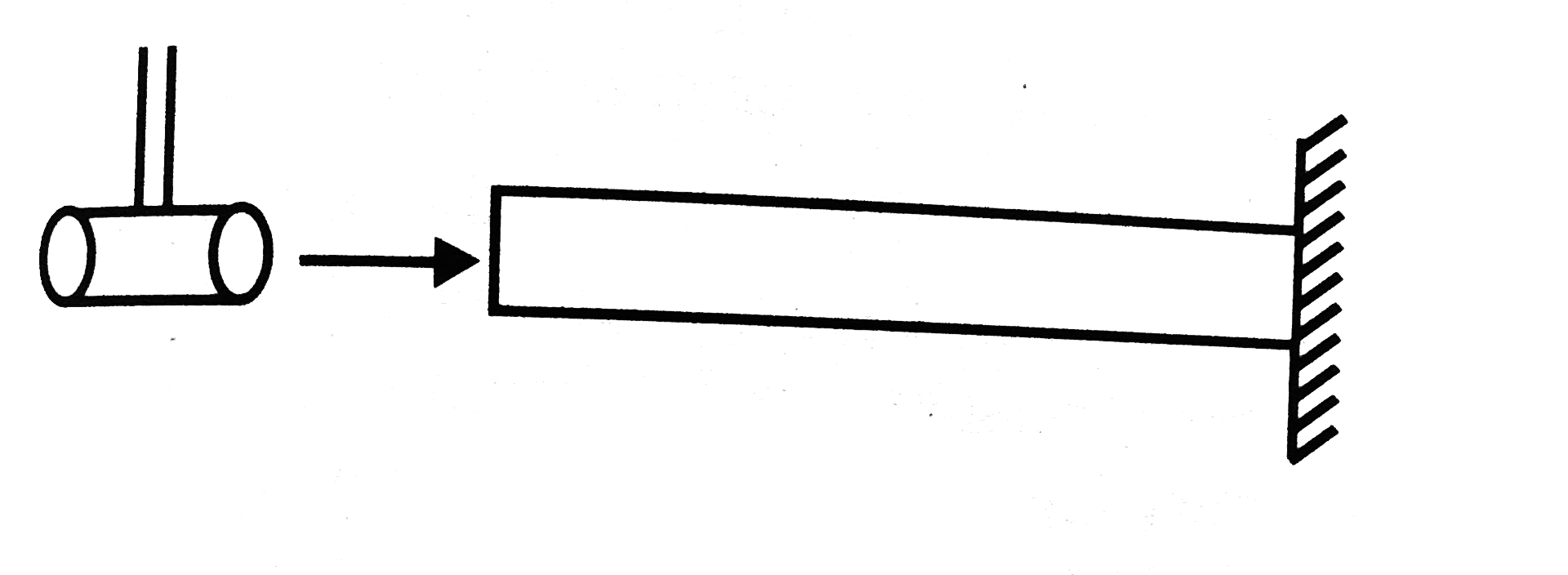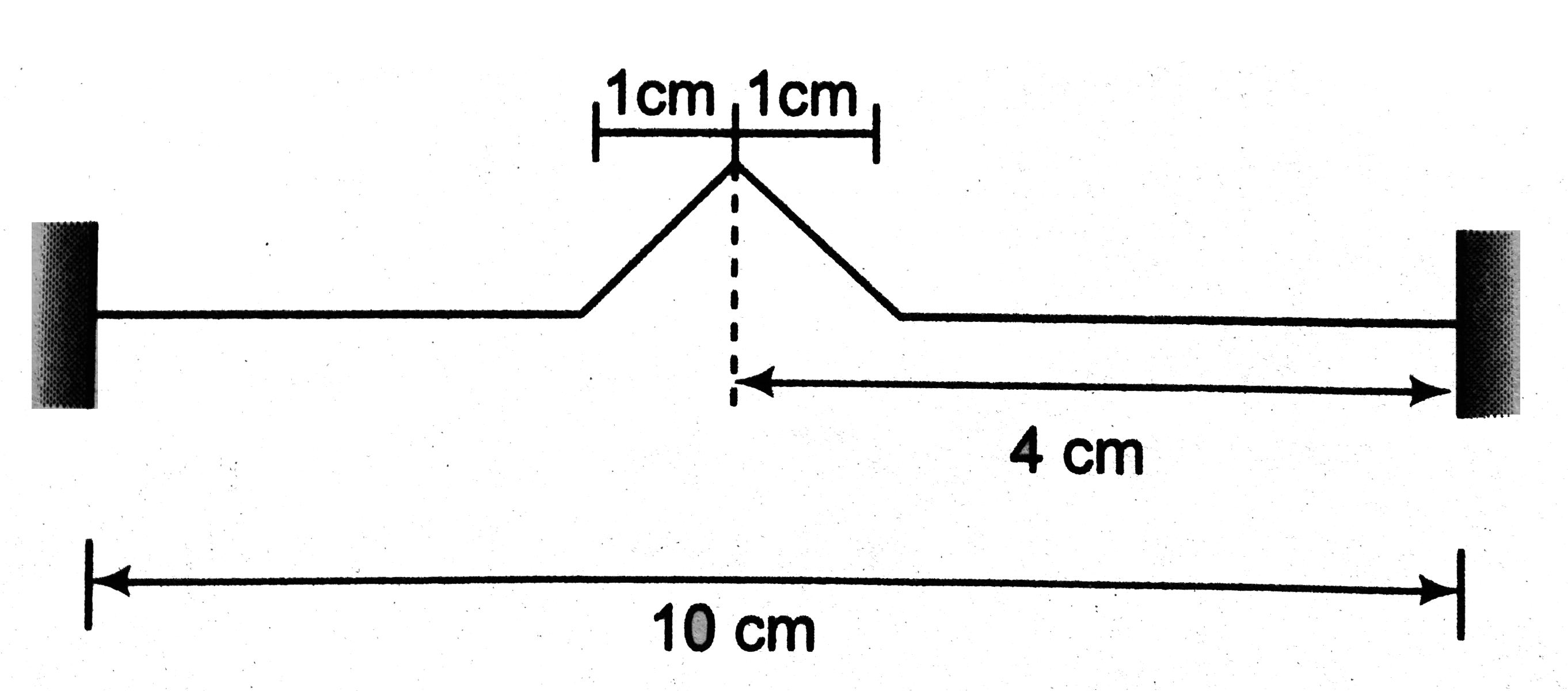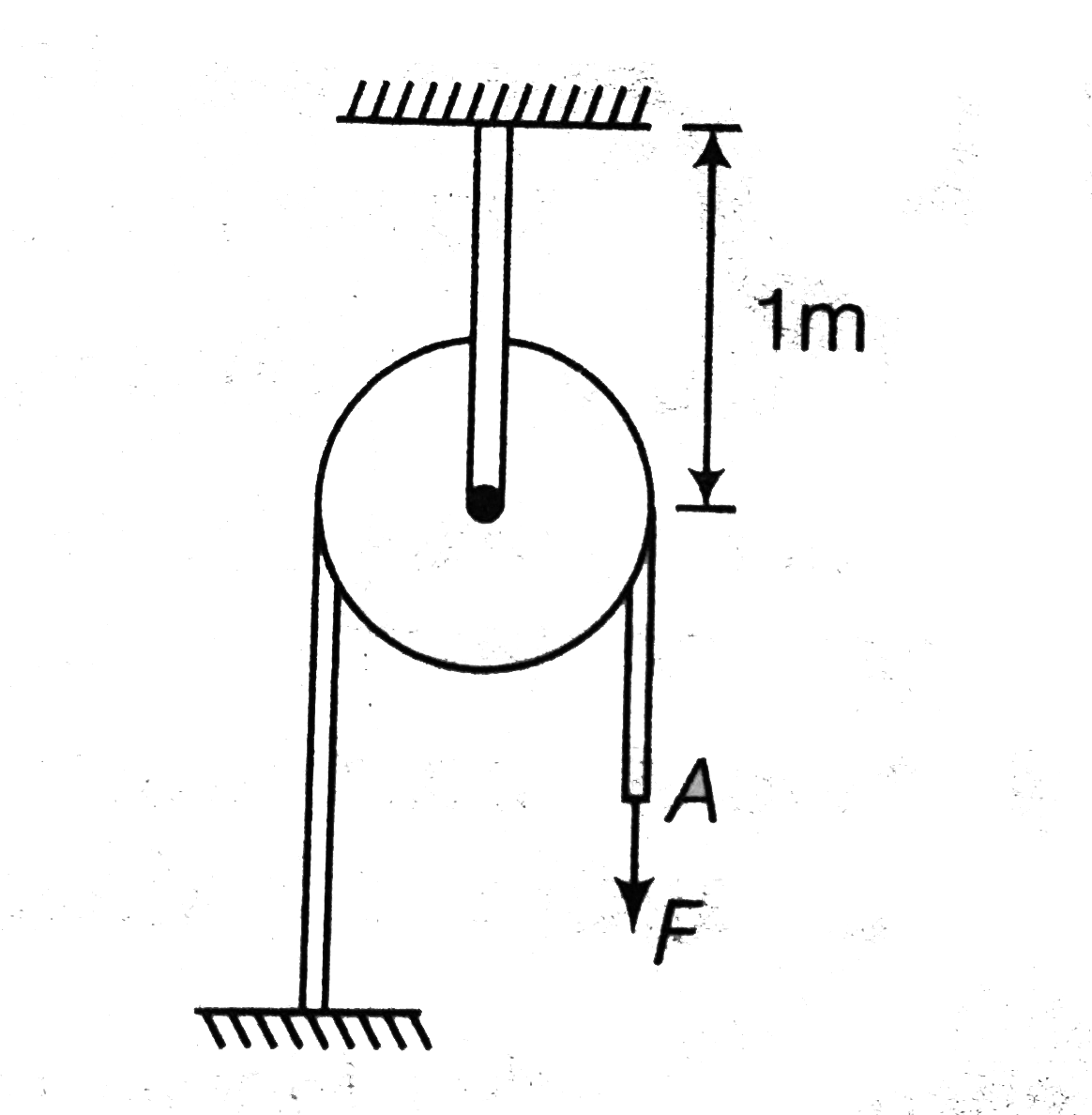A 1000m long rod of density 10.0×104kg/m3 and having young's modulus Y=1011Pa, is clamped at one end. It is hammered at the other free end as shown in the figure. The logitudinal pulse goes to right end, gets reflected and again returns to the left end. How much time (in sec) the pulse take to go back to initial point ?
_S01_029_Q01.png) .
.
The correct Answer is:2
Velocity of longitudinal u=√Yρ=√101110×104=103ms−1
Required time 2lv=2×1000103=2s.
Topper's Solved these Questions
Similar Questions
A 100−m long rod of density 10.0×104kg/m3 and having Young's modulus Y=1011Pa, is clamped at one end . It is hammered at the other free end. The longitudinal pulse goes to right end , gets reflected and again returns to the left end . How much time the pulse take to go back to initial point.
 View Solution
View SolutionYoung.s modulus of a wire is 2×1011N/m2. If a stress of 2 x 108 N/m2 is applied at the free end of a wire, find the strain in the wire.
View SolutionA string that is 10 cm long is fixed at both ends. At t=0, a pulse travelling from left to right at 1cm/sis4.0cm from the right end as shown in figure. Determine the next two times when the pulse will be at that point again. State in each case whether the pulse is upright or inverted .
 .View Solution
.View SolutionA rectangular metallic bar one metre long, one cm deep and one cm broad is placed on a smooth table. The Young's modulus and modulus of rigidity of metal of the bar are 2×1011N/m2 and 8×1010N/m2 respectively.
If the bar is rigidity clamped at one end is pulled at the other end with a force 5000 N applied normaly to its end cross-section, calculate the elongation of the bar and the work done in elongating the bar.View SolutionThe axle of a pulley of mass 1kg is attached to the end of an elastic string of length 1m, cross- sectional area 10−3m2 and young's modulus 2×105Nm−2,whose other end is fixed to the ceiling. A rope of negligible mass is placed on the pulley such that its left end is fixed to the ground and its right end is hanging freely , from the pulley which is at rest in equilibrium . Now, the rope and the pulley can be neglected. (Given, g=10ms−2)

The elongation of the string before applying force isView SolutionThe axle of a pulley of mass 1kg is attached to the end of an elastic string of length 1m, cross- sectional area 10−3m2 and young's modulus 2×105Nm−2,whose other end is fixed to the ceiling. A rope of negligible mass is placed on the pulley such that its left end is fixed to the ground and its right end is hanging freely , from the pulley which is at rest in equilibrium . Now, the rope and the pulley can be neglected. (Given, g=10ms−2)

The elongation of the string before applying force isView SolutionThe axle of a pulley of mass 1kg is attached to the end of an elastic string of length 1m, cross- sectional area 10−3m2 and young's modulus 2×105Nm−2,whose other end is fixed to the ceiling. A rope of negligible mass is placed on the pulley such that its left end is fixed to the ground and its right end is hanging freely , from the pulley which is at rest in equilibrium . Now, the rope and the pulley can be neglected. (Given, g=10ms−2)

The elongation of the string before applying force isView SolutionA string of length 0.4 m and mass 10−2 kg is tightly clamped at its ends. The tension in the string is 1. 6 N. identical wave pulses are produced at one end at equal intervals of time Δt. The value of Δt which allows construction interference between successive pulses is
View SolutionA string of length 40 cm and weighing 10 g is attached to a spring at one end and to a fixed wall at the other end. The spring has a spring constant of 160Nm−1 and is stretched by 1.0 cm. If a wave pulse is produced on the string near the wall, how much time will it take to reach the spring ?
View SolutionA string of length 40 cm and weighing 10 g is attached to a spring at one end and to a fixed wall at the other end. The spring has a spring constant of 160Nm−1 and is stretched by 1.0 cm. If a wave pulse is produced on the string near the wall, how much time will it take to reach the spring ?
View Solution

